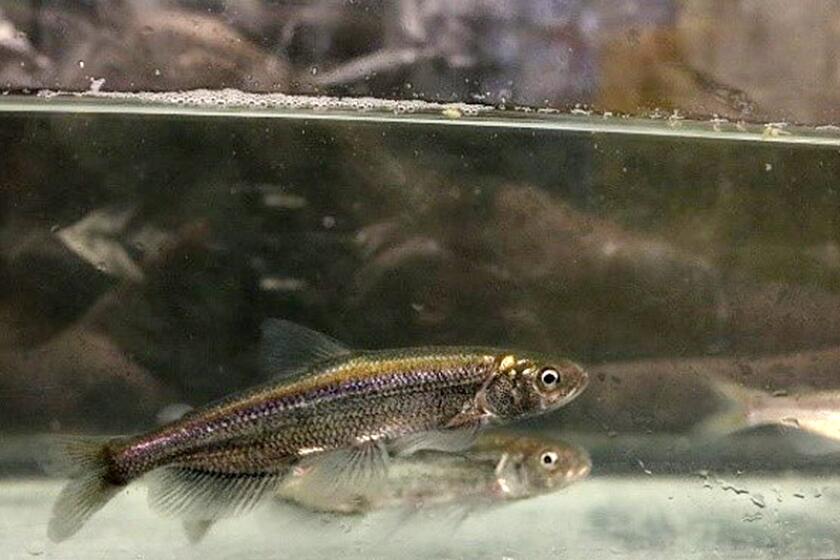BREEDING BIRDS: BLUE GROSBEAK
- Share via
BLUE GROSBEAK
(Guiraca caerulea Linnaeus)
Description: The male Blue Grosbeak is deep blue and is similar to the Indigo Bunting, although it is larger, has wide chestnut wing bars and a heavy, large
bill. Females are dull brown above and buffy below, with wing bars and large bills, similar to the male. Juveniles resemble the female.
Habitat: Somewhat common, Blue Grosbeaks are found in low, overgrown fields, streamsides, along woodland edges and brushy road- sides.
Diet: Includes, snails, grain and, occasionally, fruit.
Displays: No display pattern is documented, although it has a habit of twitching and spreading its tail.
Nest: Usually built in low trees or vine tangles. It is made of twigs, small roots and inner bark strippings and lined with grass, dried leaves, paper, hair, vine tendrils and small roots.
Eggs: Pale bluish white, unmarked. Slightly less than an inch long.
Song: Song is a series of rich rising and falling warbles. Call is a loud, explosive “chink.”
Breeding bird atlas: To report bird breeding activity in your neighborhood, or to get information on the breeding bird atlas (now in its fifth and final year), call Sea and Sage Audubon Society members Sylvia Gallagher, (714) 962-8990, or Nancy Kenyon, (714) 786-3160.
Note: Map is divided into 5-kilometer squares so that Audubon Society volunteers can more easily survey areas on a regular basis.
Sources: Sea and Sage Audubon Society; “The Birder’s Handbook,” Ehrlich, Dobkin and Wheye, Fireside Books (1988); “Field Guide to the Birds of North America,” National Geographic Society (1987); “Birds of Southern California: Status and Distribution,” Garrett and Dunn, Los Angeles Audubon Society (1981).
Indicates 5-kilometer-square areas where breeding activity has been confirmed.
Sign up for The Wild
We’ll help you find the best places to hike, bike and run, as well as the perfect silent spots for meditation and yoga.
You may occasionally receive promotional content from the Los Angeles Times.



